Nikita Sergeyevich Khrushchev
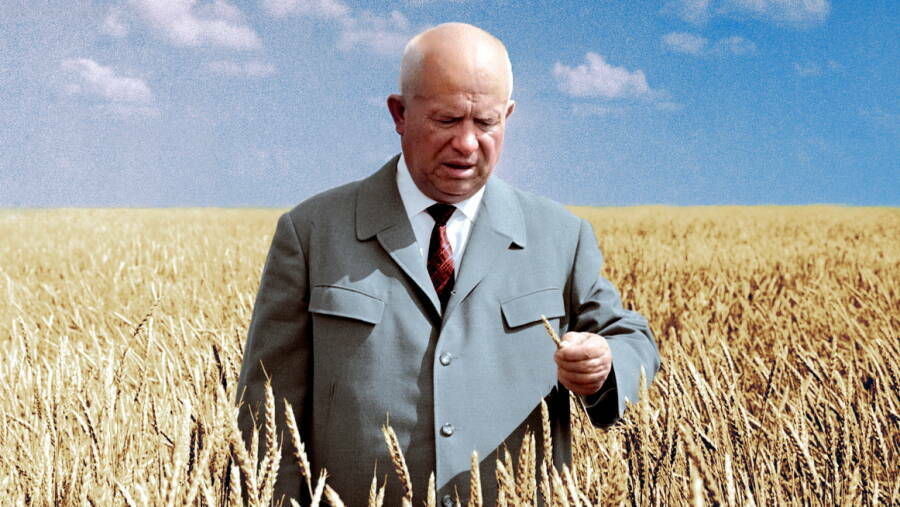
Nikita Khrushchev is one of the most colourful Soviet leaders. Year of his reign went down in the history of the Soviet Union as "The Thaw" — a time of reform and liberalization of society to a certain extent after the death of Joseph Stalin. However, not all of Khrushchev's transformations proved to be successful. He remained an erratic and inconsistent leader in the memory of many people.
Childhood and Youth
Nikita Khrushchev was born on April 3 (15), 1894, in a poor working-class family in the village of Kalinovka, the Kursk Oblast. Khrushchev spent his childhood working hard in the field and grazing sheep. He did not receive much of a formal education: until the age of 9, he attended a parish school where he obtained basic reading, writing, and mathematical skills.
In 1908, the Khrushchev family moved to Yuzovka (now Donetsk). His father Sergey Nikanorovich Khrushchev got a job at a local mine, and his mother Ksenia Ivanovna worked as a laundress. Nikita Khrushchev spent his youth at the mine site near Yuzovka. As a teenager, he was keen to learn new things and ready to take on any job: cleaning steam boilers, working as a cobbler's and a locksmith’s apprentice, and as a seller. In 1912 Nikita Khrushchev got a job as a locksmith at the mine, which allowed him to avoid mobilization in 1914 as miners in Russia were not drafted during the First World War.
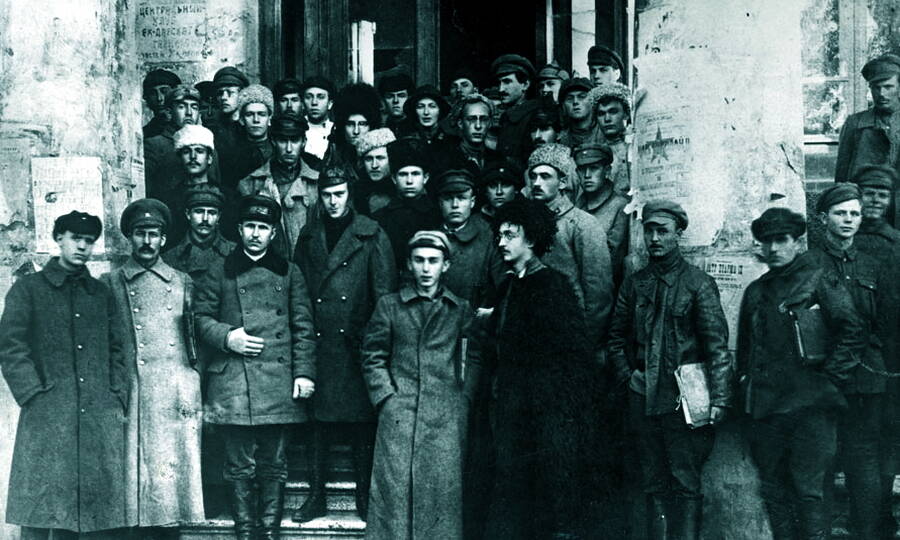
The February Revolution and then the October Revolution of 1917 changed the young man's life. He was elected a member of the Council of People's Deputies in the suburban settlement of Rutchenkovo in the Donetsk Oblast, was on the Military Revolutionary Committee, and became the chairman of the local Trade Union of the Mining Industry Metalworkers in December 1917. Since 1918 Khrushchev took part in the Civil War already as a member of the Bolshevik Party. He led the Red Guards detachment and served as a battalion commissioner of the 9th Rifle Division of the Red Army. In the summer of 1920, Khrushchev graduated with honours from the party school under the political department of the 9th Army and was appointed to the position of an instructor of the political department.
During the 1920s, Khrushchev had been building his party career and filling the education gaps. At first, he studied at the Rabfak (Workers’ Faculty) of the Donetsk Mining Technical College. In 1929, he moved to Moscow and enrolled at the Industrial Academy. There he met Nadezhda Alliluyeva, Stalin's wife, who attended the Academy courses in the same time period. Khrushchev obtained strong protection from that acquaintance, and his political career went uphill.
Khrushchev's Party Career
During the 1930s, Khrushchev advanced from the party secretary of the Industrial Academy to the first secretary of the Central Committee of the Communist Party of the Ukrainian SSR and a member of the Political Bureau of the Central Committee of the All-Union Communist Party (Bolsheviks). In 1931, he became the first secretary of one of the Moscow District Committees. Starting from 1934, he headed the Moscow City Committee of the All-Union Communist Party (Bolsheviks). In 1935, he retained this position and also became the head of the Regional Committee. Khrushchev held both of these important positions until 1938 when he was appointed the first secretary of the Central Committee of the Communist Party (Bolsheviks) of the Ukrainian SSR. In 1939, Khrushchev became a member of the Political Bureau of the Central Committee of the Communist Party (Bolsheviks).
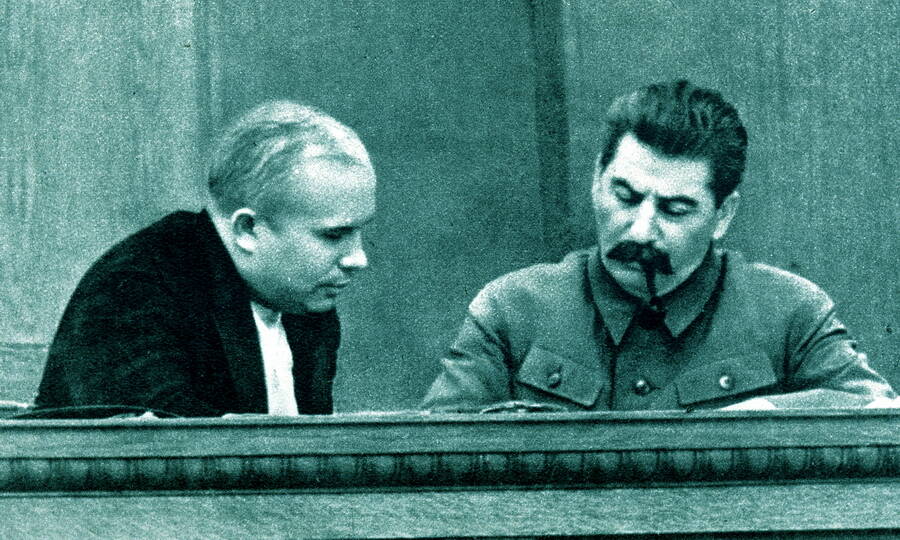
Khrushchev's career in the higher echelons of power developed against the background of growing repression and purges, in which he had borne a part. Throughout his life, Nikita Khrushchev fought against the "enemies of the people" in his own way. Despite the fact that no official documents confirming Khrushchev's orders on arrests and executions in Moscow were found, repressions against tens of thousands of people, including those who held leading party positions, could not have been carried out without the consent of the Regional Committee’s first secretary. In Ukraine, more than 160,000 people were arrested during 1938–1940, which also could not happen without the approval of the party leader.
In the Great Patriotic War, Khrushchev served as a lieutenant general and held political positions in the military councils of the South-West direction (1941–1942), South-West Front (1941–1942), Stalingrad (1942), Voronezh (1943) and the 1st Ukrainian Front (1943–1944).
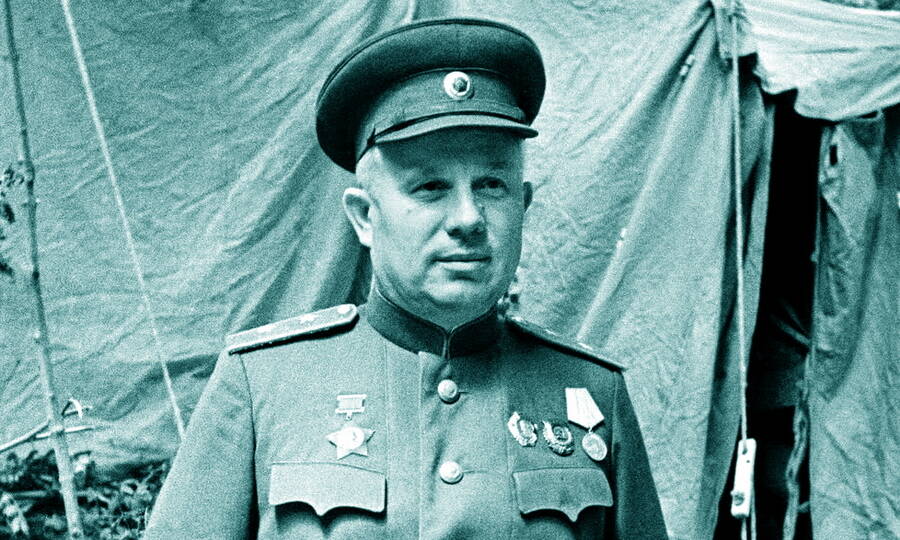
After the war, Khrushchev remained in Ukraine for several years. Starting from 1944, he served as chairman of the Council of People's Commissars of the Ukrainian SSR (since 1946 this agency was called the Council of Ministers). In December 1947, he again became the first secretary of the Central Committee of the Communist Party (Bolsheviks) of the Ukrainian SSR. Khrushchev returned to the capital of the USSR in 1949, when he was re-elected the first secretary of the Moscow Regional Committee and the Moscow City Committee of the Communist Party, as well as the secretary of the Central Committee of the All-Union Communist Party (Bolsheviks).
Head of the USSR
Under Stalin, Khrushchev's party career would hardly develop further. However, after Stalin's death on March 5, 1953, Khrushchev and his supporters won the internal party confrontation. On 14 March 1953, he was elected Secretary of the Central Committee of the CPSU, and in September 1953, he was elected the First Secretary.
One of the most important Khrushchev’s achievements as the head of state was debunking Stalin's cult of personality, condemnation of mass terror, numerous judicial reviews, and rehabilitation of the repressed people. Destalinization in the country began in 1956 after the famous speech of Nikita Khrushchev at the 20th Congress of the CPSU with a report "On the Cult of Personality and its Consequences". In 1961, the body of Joseph Stalin was removed from the mausoleum.
In 1957, the party opposition attempted to displace the first secretary from his office, but Khrushchev's supporters won, and his opponents “the anti-Party group of Malenkov, Kaganovich, Molotov, and Shepilov, who joined them,” as the newspapers called it, were expelled from the Central Committee and then from the Party. In 1958, Khrushchev also took the post of Chairman of the Council of Ministers of the USSR, that is, he combined the positions of the head of the party and the head of the government.
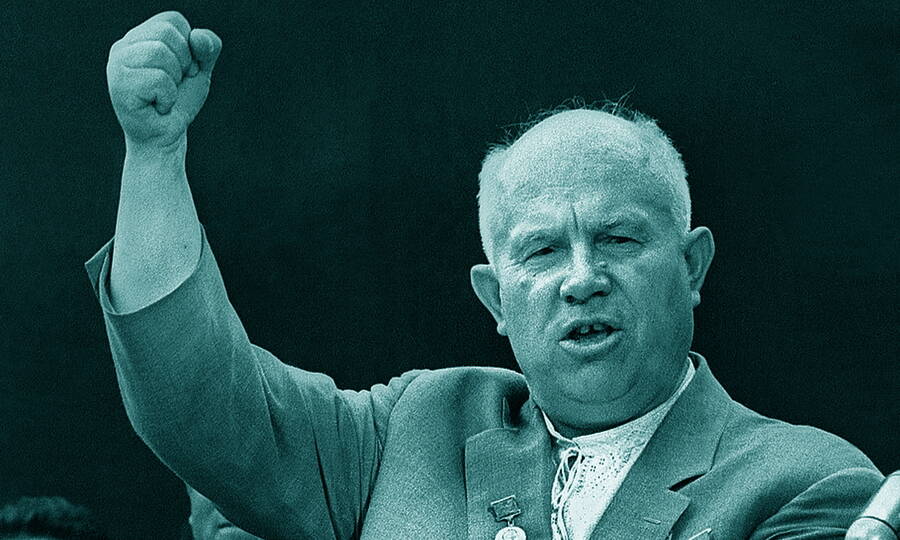
In 1961, the 22nd Congress of the CPSU held under the leadership of Khrushchev approved the new programme of the party, which, according to Nikita Sergeyevich, projected that communism would be built by 1980. The new programme also included the so-called "Moral Code of the Builders of Communism", an ethical code calling for conscientious work, collectivism, honesty, humanism and intolerance to all racial and national dislike.
Nikita Khrushchev became one of the few Soviet senior party and state leaders who did not die in office but was removed from power. In 1964, at the Plenum of the CPSU Central Committee, his rivals criticized him for ill-considered reforms and "voluntarism", and sent him into retirement "for health reasons", according to the official wording. In retirement, a disgraced politician dictated his memoirs that were secretly brought to the United States and published during his lifetime.
Nikita Khrushchev's Reforms
During his term as First Secretary of the CPSU Central Committee and the chairman of the Soviet government, Khrushchev carried out a number of reforms related to the economic and social sectors. In particular, he significantly softened the stringent labour legislation that had existed since wartime: criminal penalties for delays and absenteeism were abolished, workplace changes were allowed, and working hours were reduced. Under Khrushchev, in 1956, the law on universal pension provision for citizens was adopted, which, however, did not extend to collective farmers until 1964.
Economic reform was launched in 1957 to decentralize production management and transfer most of the powers from line ministries to the Regional Council of People's Economy. However, in practice, this led to the disruption of existing rigid economic ties, which did not produce the desired results under the planned economy of the USSR. In 1964–1965, after Khrushchev's removal from power, the reform had rolled back.
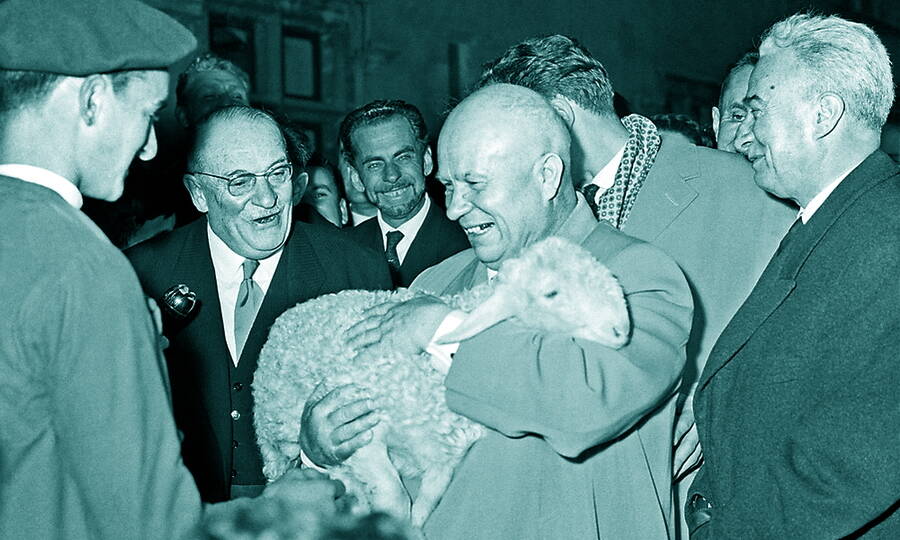
In 1959, the USSR adopted a seven-year national economy development plan, also known as a Seven-Year Plan. Its tasks included significant development of all branches of the country’s industry and agriculture. The pace of industrialization increased during the seven-year period. Oil production, metallurgy, chemical and power industry were developing rapidly. Numerous large SDPPs and TPPs, Bratsk HPP and the first power unit of Beloyarsk NPP were put into operation.
Technology progress of the military-industrial complex was intensified by the arms race. Nuclear and thermonuclear weapon tests, including the explosion of the famous Tsar Bomb over Novaya Zemlya (the New Earth) archipelago, were conducted under the rule of Khrushchev along with the active development of aviation and space industry. In 1957, the USSR launched the first artificial Earth satellite, and in 1961, Yuri Gagarin made the first manned space flight. Along with the development of high-tech weapons, Khrushchev conducted massive army cuts. Along with heavy industry and military-industrial complex, the production of consumer goods grew rapidly under Khrushchev.
Khrushchev's active attempts to reform agriculture cannot be considered successful. This sector of the economy had been developing in an extensive way: it was planned to develop virgin lands, and attempts were made to grow agricultural crops in an unsuitable climate. Huge acreage was allocated for the "Queen of the Fields" in the course of failed Corn Campaign which became a running joke. The campaign to triple meat production also failed, and attempts of wishful thinking sometimes led to deplorable results. For example, in the Ryazan Oblast, the authorities resorted to massive seizures of livestock from private owners and slaughting of animals, which led to catastrophic consequences for regional agriculture.
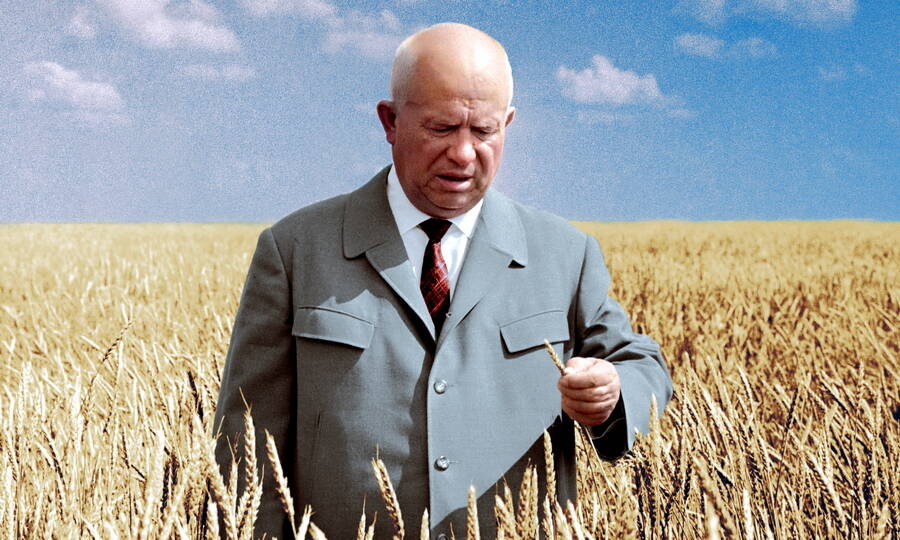
However, by the mid-1960s, the standard of living of ordinary people had increased significantly. Wages and pensions have increased, and the tax burden has decreased. For instance, the tax on childlessness has been abolished for unmarried women. Housing conditions were significantly improved due to mass construction that started under Khrushchev. In a few years, thanks to newly established housing cooperatives millions of people who used to live in communal apartments and barracks were able to get separate apartments — the famous Khrushchyovka. Khrushchev also conducted an educational reform. Boys and girls started attending general schools again instead of going to separate ones. Education became free for high school students from 8 to 10 grades and university students.
The "Thaw" also affected the cultural life of the country: censorship weakened, and previously banned books were published. New movies had a more critical attitude towards reality. However, this cultural and social "thaw" had rigid boundaries. The Sixtiers were quite popular, but at the same time writers and poets creating arts "beyond the limits" were persecuted, the exhibition of avant-garde artists in the Moscow Manege was roughly criticized, and the anti-religious campaign continued.
Foreign Policy
Khrushchev's foreign policy reflected the contradictory nature of his activities. A confrontation between the two superpowers, the USSR and the United States, continued to be the main foreign policy vector. The arms race continued, and the 1962 Caribbean Crisis erupted because of the attempt to deploy nuclear missiles in Cuba. Sometimes this confrontation took comic forms. On June 24, 1959, an American delegation headed by Vice President Richard Nixon visited Moscow. At the exhibition in Sokolniki, Khrushchev, in the heat of the moment, told him: "We will show you Kuzma's mother!" The confused interpreter conveyed the phrase about the mother of Kuzma literally, and the overseas guests long wondered what terrible weapons the Russians had prepared.

The emerging liberalization of relations with the socialist camp countries did not last long. The Hungarian Uprising of 1956 and its suppression was one of the darkest chapters of Khrushchev's rule. With the coming to power of Khrushchev, relations with China noticeably deteriorated as China's leadership negatively perceived destalinization in the USSR.
At the same time, the Iron Curtain began to fall. In 1957, the USSR hosted the 6th World Festival of Youth and Students. Thousands of foreigners came to Moscow, and Soviet people could relatively freely communicate with them. In 1959 Khrushchev paid a visit to the United States. Despite the fact that this visit did not make any significant changes in foreign policy, the very fact of the Soviet leader's visit to America became a landmark for both countries.
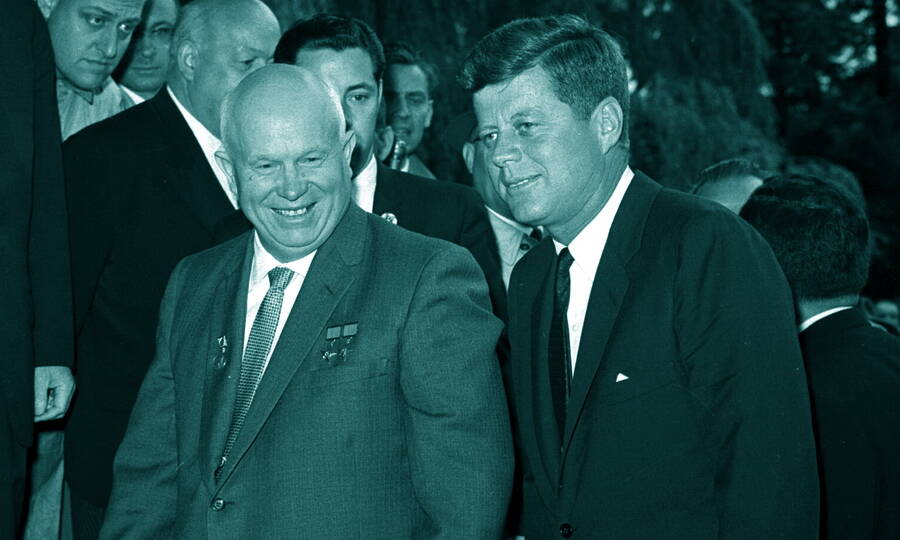
Mankind was on the verge of nuclear war during the Caribbean Crisis, nevertheless, it led to the establishment of direct communication line between the leaders of the United States and the USSR. This emergency line operates to this day, and its operability is monitored around the clock.
Family and Private Life
Khrushchev had many sad moments in his personal life. He was married three times. His first wife, Efrosinia Ivanovna Pisareva, died of typhus before she reached 25. She gave birth to Khrushchev's two children, Julia and Leonid. Leonid Nikitovich Khrushchev became a military pilot and died at the front in the spring of 1943. His second marriage lasted only a couple of years, however, Nikita Khrushchev had been helping his ex-wife for a long time after the divorce.
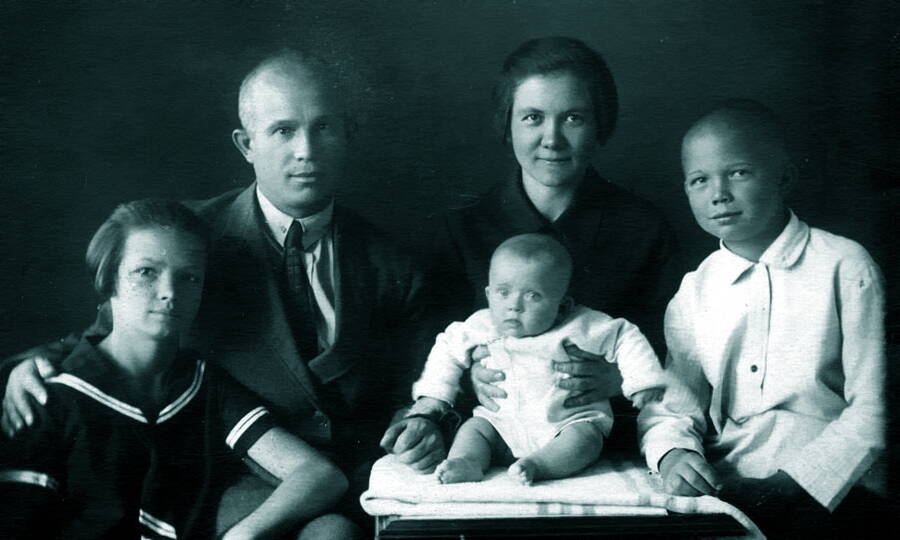
In 1924, Khrushchev started a family with Nina Petrovna Kukharchuk, but they officially registered their marriage only 40 years later, in 1965. Nina Kukharchuk played the formal role of "the first lady", accompanying her husband during official visits. Khrushchev had four children with her, but Nadezhda's first daughter died in early childhood. Khrushchev's daughter Rada Nikitichna (married name Adzhubei) became a well-known journalist and editor. She worked in Nauka i Zhizn science magazine for half a century and turned it into one of the most popular magazines in the USSR. His son Sergei Nikitich is known as a Soviet and American scientist, publicist, political scientist, and specialist in the history of the Cold War. Another daughter of Khrushchev, Elena Nikitichna, was also engaged in scientific activities. Today Khrushchev's grandchildren and great-grandchildren live in Russia and the USA.
Death and Funeral
Khrushchev died from a massive heart attack on September 11, 1971. The highest party nomenklatura (political elite) was confused about making funeral arrangements for the disgraced first secretary. It was inconceivable to either bury him with all honours or ignore such an event at all. Khrushchev was laid to rest in the Novodevichy Cemetery in Moscow, not in the necropolis near the Kremlin Wall. During the closed ceremony of farewell, no one was allowed to enter the cemetery except his close relatives.
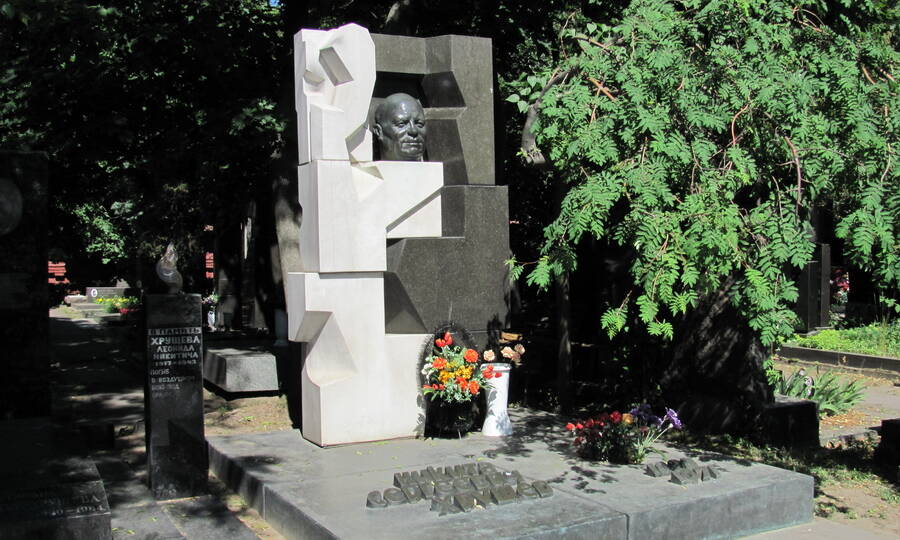
The monument on Khrushchev's grave was made by Russian sculptor Ernst Neizvestny who was one of those avant-gardists criticized by Khrushchev in 1962. The black granite and white marble of the monument perfectly reflect the contradictions of his rule, the dark and bright sides of his personality.
Results of Activities
Nikita Khrushchev's biography perfectly illustrates the thesis that in the Soviet years, a person from the lower social strata could raise to the level of country governance. Having gone from a poor illiterate worker to the head of a huge country, Khrushchev did not lose the connection with the people over the years and often let himself in a deliberately plain look, but his contemporaries emphasized his keen mind, sense of humour and subtle ability to reconcile different points of view.
Despite numerous failures, including the failed agricultural reform and a rather complicated foreign policy situation, it is safe to say that people had become better off living under Nikita Khrushchev. The income of the population increased, the state began to pay pensions, consumer loans were issued under the minimum percentage, and mass housing construction started. Education became more accessible. The range of household services and consumer goods increased markedly. Great achievements in science and technology, aviation, space industry and energy have raised the economy of the USSR. At the same time, the struggle with the "enemies of the people" did not stop, but took milder forms than during Stalin's rule.
Новое
Видео
Памятные даты военной истории России
Переход через перевал Сен-Готард. Памятные даты военной истории России
Памятные даты военной истории России
День победы над Японией и окончания Второй мировой войны. Памятные даты военной истории России
Памятные даты военной истории России
Битва за Кавказ. Памятные даты военной истории России
